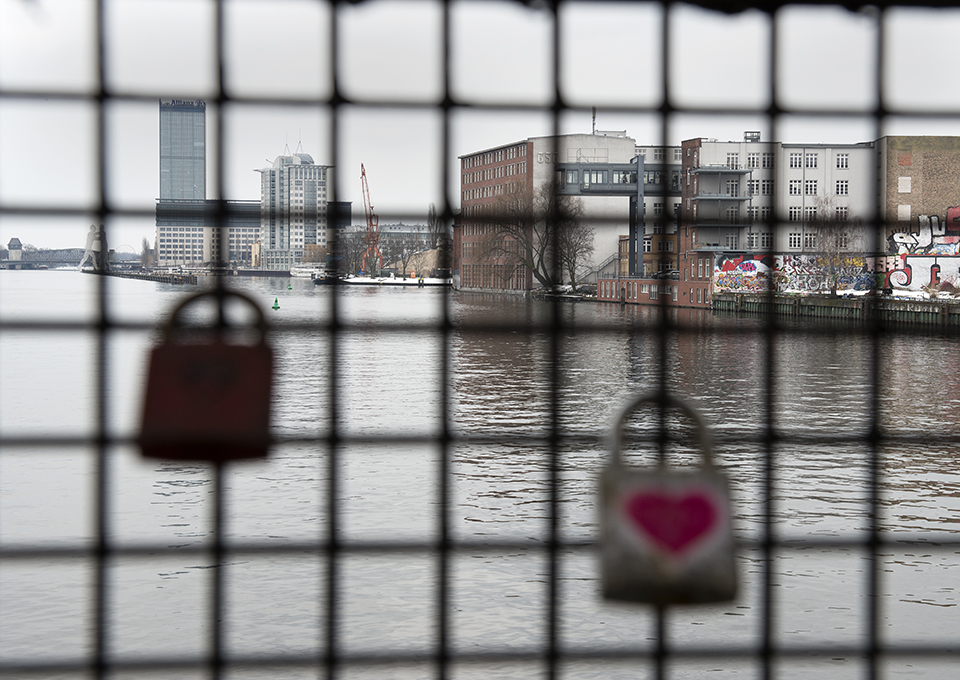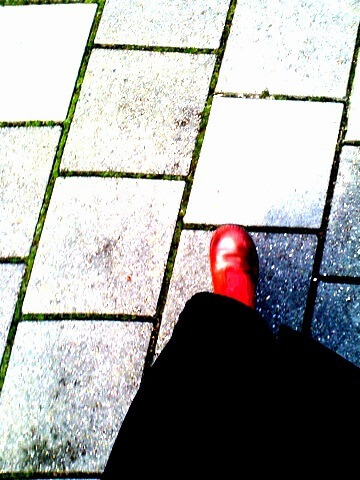“I just thought, now it will take longer before I have my freedom”, says Marita Ulbricht about that day in 1974 when she was pulled out of the boot of the diplomatic car and taken to Hohenschönhausen, the secret investigation prison.
In 1974 the 38-year-old medical secretary tried to escape from the GDR with the help of friends in West Germany. She had fallen in love with a Frenchman on the other side of the wall. Apart from an old mother, she had no-one, so her escape would not harm many people. Just to be sure, she burned all the letters that could betray her friends.
Years later, when the border had become history, she would discover, while looking at her Stasi dossier, that her attempts to leave no traces behind were utterly pointless. In the box there were copies of all the correspondence she had ever conducted. “The Stasi knew more about my life than I did.”
Stasi jail Hohenschönhausen
She was betrayed by a dentist who had fallen out of favour and thanks to this action was allowed to run a practice again. She shrugs as she tells the story. It is one of the countless absurdities of life under a deranged regime, she seems to be saying, while her dark eyes give me a searching look.
Thirty years on, the Frenchman has died and the widow is guiding interested people round in Hohenschönhausen. If you look at an old GDR map of Berlin, you will find only a white patch at the location where the Soviet Union set up an internment camp and the Stasi later housed its investigation centre. Sperrgebiet.
Sperrgebiet
No admittance for anyone who had no business to be there. What actually happened there was horrific and was hidden from public view.
Walking through the sombre cold corridors of the former factory site with Marita, I can almost hear how the prisoners were driven crazy in their lonely cells without light and without any square corners, to increase their disorientation.
I feel the cold, which is hardly bearable even in my winter coat and think about the people who were buried away, sleeping without blankets on the wooden benches that served as beds, while water dripped through holes, ensuring that they were always wet and chilled.
The U-boat – that was the name given to the underground complex. It was originally set up by the Russians to lock up Nazis. The concept of a Nazi was loosely defined. As far as the Russians were concerned, every German was a Nazi, which meant that the internment camp was quickly full with boys who were not even 14 and men, some of whom were well over 80.
From Stasi jail Hohenschönhausen, if they survived, people were transported to Soviet camps. According to estimates, 3000 prisoners died between July 1945 and October 1946 as a result of torture, malnutrition and the cold. Their bodies were thrown into bomb craters and local landfill sites. To neutralize the stench of all those corpses and not to alarm the neighbourhood, they were covered with chalk.
GDR Opponents
When the Stasi took over the building in 1951, it was the turn of everyone who was seen as an opponent of the GDR: Jehovah’s Witnesses, reformist communists, liberals, Christian Democrats and people like Marita who were trying to escape the GDR. The first victims of the Stasi ended up in the U-boat and were put to work building a second prison, which housed 200 cells and interrogation rooms.
That is where Marita found herself. “Everything was designed to unsettle and humiliate you”, she tells me. It began the moment you were picked up; you were blindfolded and had no idea where you were.
Usually you were brought here by car. When you got out, bright lights were suddenly pointed at you. Afterwards, you had to undress and someone peered into all your body orifices. You were thrown into a cell with the house rules, which you were expected to learn off by heart.
In the first few weeks you were only allowed to sleep if the light went out. Sometimes it stayed on all night. You were spoken to as a number.
Laughing
Talking loudly or laughing was forbidden. They were afraid that someone would be able to hear you in another cell. You have to remember that in those days so many people were picked up that there was a real chance that someone there would know you.”
She was in the investigation centre of Stasi jail Hohenschönhausen for five months. “I was just a small fish. I wasn’t eligible for the TV room – that was reserved for important political prisoners. They were brought out of their cells and allowed to watch television. What they didn’t know was that they were being exposed to X-rays. None of those prisoners is still alive; they all died of cancer.
I was lucky I didn’t have children. I had said to myself: while I’m living in the GDR, I don’t want children. I’m not mad! But women with children were told that their child was being put up for adoption by families that supported the government.
The women talked and betrayed everyone they could think of. I told my interrogators I wouldn’t give them any names. Hadn’t we learned at school that the worst aspect of the Third Reich was the betrayal?”
“But the Stasi had its own methods. I suddenly had to go to another cell where there was already a prisoner. She was in a bad way and cried while she told me her story. A few days later I went back to my own cell. It was only later that I understood that the woman wasn’t a prisoner but someone from the Stasi who was trying to extract information from us this way.
Stasi methods
It’s not something you would invent, is it? At its height, they opened 90,000 letters a day in the GDR. We didn’t have any unemployment in the GDR. Of course not, all those people were set to work reading other people’s letters or listening in to telephone conversations.”
Escape attempt
Marita was sentenced to 2 years and 3 months for her escape attempt – a punishment that was rushed through by the court. After 5 months of investigation, she was transferred to the women’s prison where she ended up among murderers and lunatics.
“I had to sew bed linen, which was destined for the big stores in the West. Pretty ironic, don’t you think? We gave up our earnings to the prison because we had to pay for our own food and accommodation. She grimaces as she says it. “The men made furniture for Ikea.”
Buying freedom
Marita was lucky. From 1977 onwards, West Germany began buying the freedom of political prisoners. “Actually it was absurd because this money kept the regime afloat financially.” I always held on to the thought: one day I’ll be in the West and you’ll be here.” I had to appear before a committee once where they told me I was being stripped of my GDR nationality. That really made me laugh.”
She must have told the story hundreds of times over the years. And yet her anger is not feigned. It’s a sarcastic anger when she tells about all those people who were never brought to justice, like the camp doctor who just happens to have a psychologist’s practice now a few streets away. Or what about the Stasi ringleaders who even today get together in their Stasi uniforms?
Not to mention the idiots who snarl at her that presently the day will come when the system will be in power again and people like her will be strung up on a tree. “I ended up in the free West. Unfortunately the perpetrators did too. Most of them now lead perfectly ordinary lives. Receive a pension. I just begrudge some people the turnaround.”
Text: Anneke de Bundel – Images: Nicole Franken
Translation: Christine Gardner


